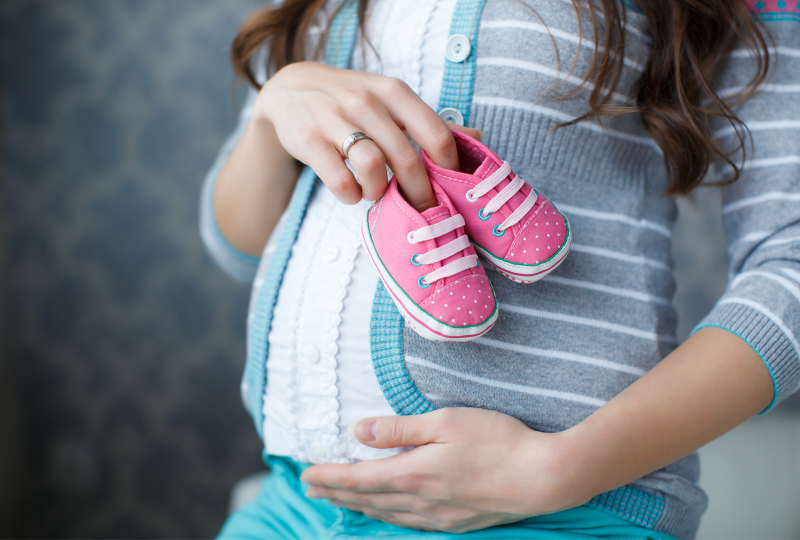Enhanced antenatal service to prevent perinatal HBV transmission shows high acceptance





Hepatitis B virus (HBV) DNA testing for pregnant women who screened positive for hepatitis B surface antigen (HBsAg) and antiviral treatment for those with high viral loads have shown high acceptance rates in a retrospective study conducted at Queen Mary Hospital (QMH).
This service model, established at QMH on 15 May 2017, was subsequently adopted as a framework for a fully funded enhanced antenatal service to prevent mother-to-child transmission of HBV in public maternity units, commencing 1 January 2020. [Hong Kong Med J 2020, doi: 10.12809/hkmj208451]
Under this service model, HBsAg-positive pregnant women were offered blood tests for HBV DNA during their first antenatal visits at Tsan Yuk Hospital or QMH, at a cost of HKD 400 per test. Those with HBV DNA levels ≥200,000 IU/mL were triaged by hepatologists for an early clinic appointment, generally before 33 weeks of gestation, for counselling about potential antiviral treatment with tenofovir disoproxil fumarate (TDF) 300 mg daily, with drug compliance and HBV DNA levels monitored regularly. Pregnant women with HBV DNA levels <200,000 IU/mL were scheduled for elective long-term follow-up appointments. All neonates born from pregnant women with hepatitis B were given immunoprophylaxis with HBV vaccine and hepatitis B immunoglobulin within 12 hours of birth.
The retrospective study, conducted by researchers from QMH and the University of Hong Kong, included 13,082 pregnant women who attended the antenatal clinic from 15 May 2017 to 31 December 2019. Among 375 (2.9 percent) pregnant women who screened positive for HBsAg, only 102 (27.2 percent) had received HBV DNA testing or regular hepatological follow-up before pregnancy.
HBV DNA testing and hepatological reviews were offered to the remaining 273 pregnant women, with a high acceptance rate of 97.8 percent (n=267). Among 265 pregnant women who completed HBV DNA testing (median gestational age, 17 weeks), 60 (22.6 percent) had high viral loads of ≥200,000 IU/mL.
Fifty-eight women with high viral loads were scheduled for hepatological review before the expected delivery date. First hepatological review appointments were scheduled at ≤32 weeks of gestation for 55 women (91.7 percent).
Among 57 women with high viral loads who received antenatal counselling about TDF treatment, 56 (96.6 percent) agreed to take the antiviral drug – a highly promising rate, according to the researchers. TDF treatment was commenced at ≤32 and ≤28 weeks of gestation in 52 (92.9 percent) and 44 women (78.6 percent), respectively.
While adoption of immunoprophylaxis has resulted in a 75–90 percent reduction in risk of vertical transmission of HBV, high maternal HBV DNA level during pregnancy is the strongest risk factor for immunoprophylaxis failure. In Hong Kong, an immunoprophylaxis failure rate of 1.1 percent has been reported. [BMJ 2006;332:328-336; Eur J Obstet Gynecol Reprod Biol 2013;169:17-23; Clin Gastroenterol Hepatol 2018;16:144-145; J Hepatol 2013;59:24-30; J Viral Hepat 2012;19:e18-e25]
“Our study demonstrated an effective and acceptable approach involving HBV DNA testing during triage of obstetric patients for prevention of perinatal HBV transmission,” the researchers noted.
“TDF is the drug of choice for antenatal prophylaxis because of its potent effect, and the possibility of mutants resistant to lamivudine and telbivudine due to prior treatment with these agents,” they commented. [Aliment Pharmacol Ther 2017;45:1493-1505; World J Gastroenterol 2015;21:2504;2509; Arch Gynecol Obstet 2019;300:251-259] “Breastfeeding is not contraindicated for women taking TDF.”
In line with evidence from randomized controlled trials, US and Asia-Pacific guidelines recommend initiation of antiviral treatment for HBV at 28–32 weeks of gestation. [Hepatology 2018;67:1560-1599; N Engl J Med 2016;374:2324-2334; Rev Inst Med Trop Sao Paulo 2020;62:e13; Hepatol Int 2016;10:1-98]